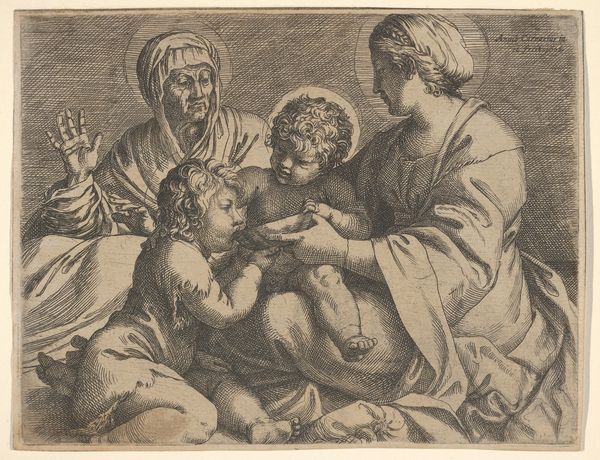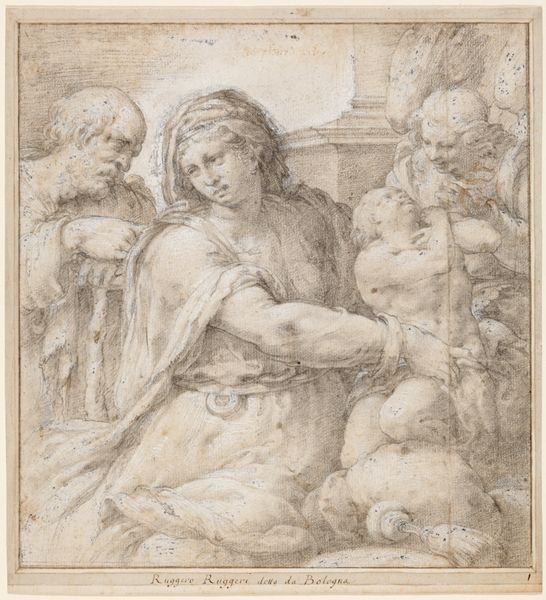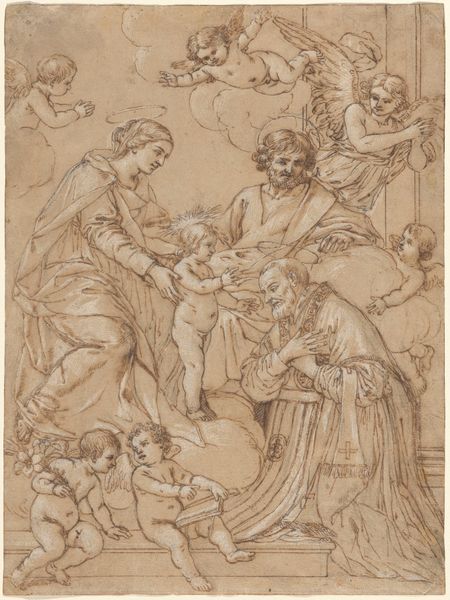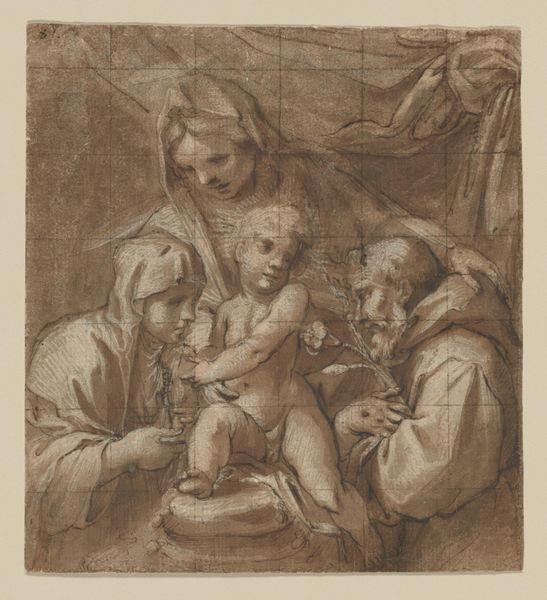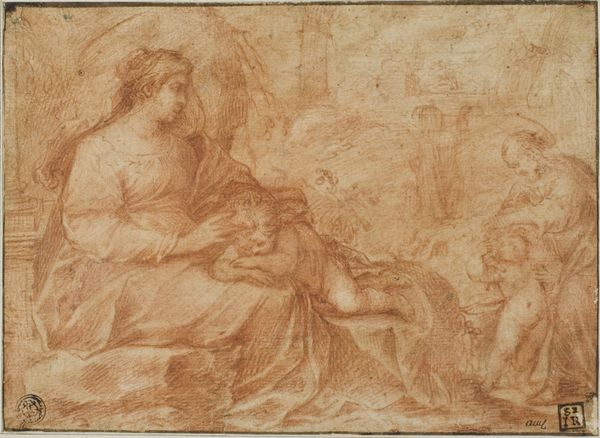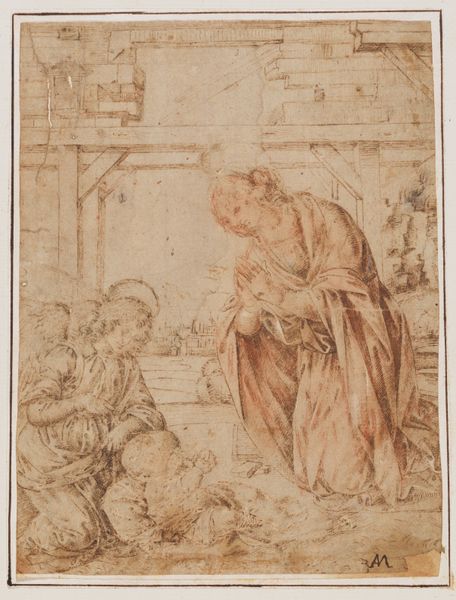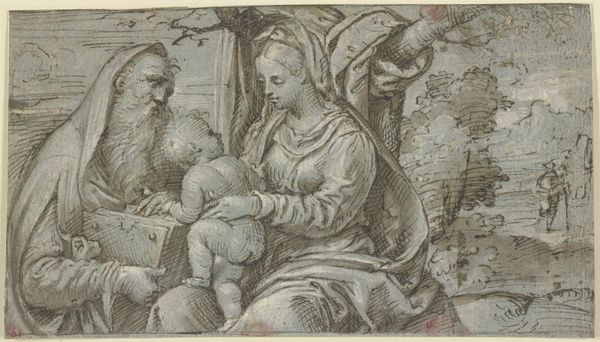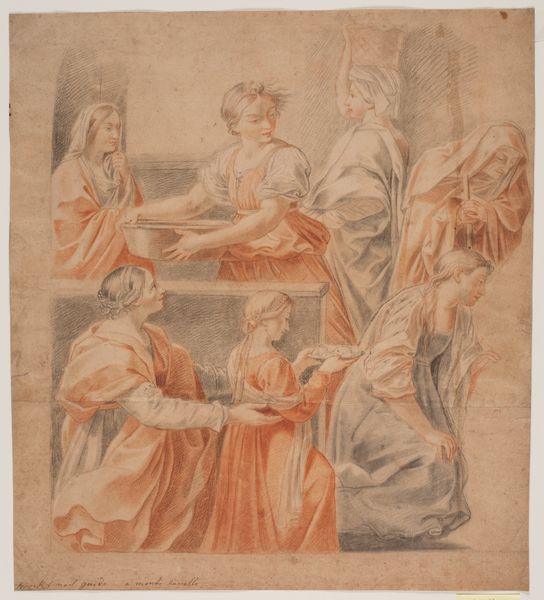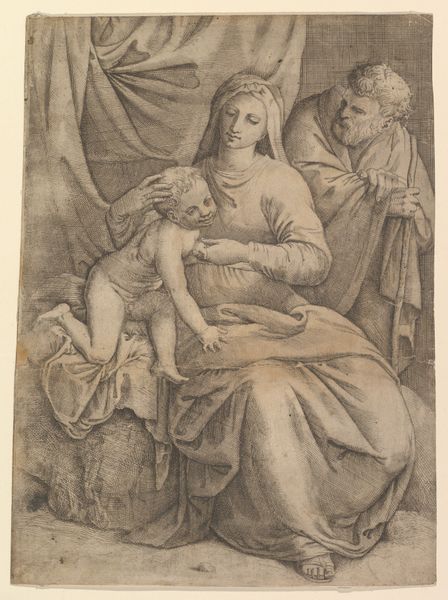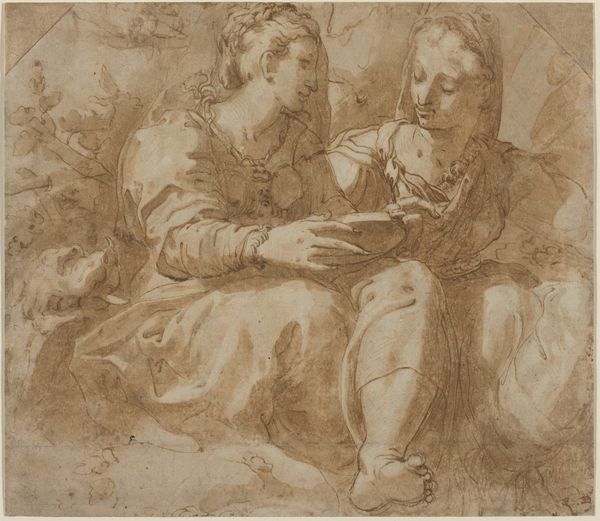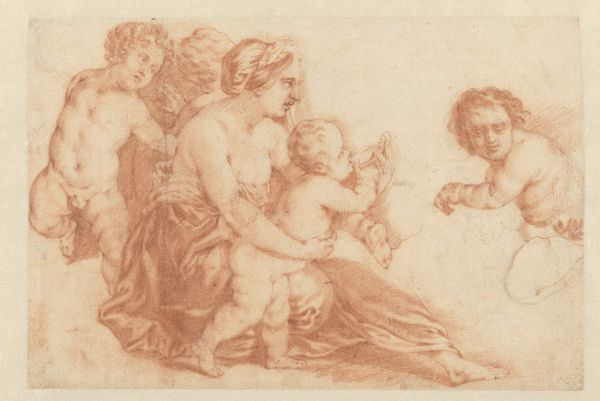
Madonna and Child with Saints Elizabeth and John the Baptist after 1606
0:00
0:00
drawing, print, paper, pencil, chalk, pen
#
portrait
#
drawing
# print
#
pencil sketch
#
figuration
#
paper
#
11_renaissance
#
coloured pencil
#
group-portraits
#
pencil
#
chalk
#
pen
#
italian-renaissance
Dimensions: 132 × 164 mm
Copyright: Public Domain
Curator: So, what strikes you about this drawing, this reddish-brown chalk, pen, and pencil rendering? Editor: Oh, it's immediate: chaotic warmth. Like peeking into someone’s intensely personal family moment, softened by history, nostalgia... dust motes of the Renaissance! It feels incredibly intimate. Curator: Absolutely. The Art Institute of Chicago holds this study, "Madonna and Child with Saints Elizabeth and John the Baptist," created after 1606 by Annibale Carracci. It exemplifies a High Renaissance interest in dynamic compositions. Editor: Dynamic is right! Those chubby babies are ALL elbows and knees and grabby little hands. It’s not some static, posed devotion. There's an almost…domestic squabble energy? Curator: That's Carracci's skill – infusing classical themes with relatable humanity. Consider the historical context: Renaissance artists frequently secured commissions from wealthy families seeking portrayals reflecting their ideals and aspirations. Carracci infuses this established demand with accessible emotional depth, reflecting new spiritual ideologies from Counter-Reformation Italy. Editor: Right. And that loose style of hatching; look closely –it adds to that unvarnished quality. The contrast between the sharp, sure lines defining Mary’s face, then those scribbled-in areas around the figures... Almost as if the energy is too much to contain with exactness. It breaks free! Curator: The medium underscores your point, really. Drawing permitted exploration of preliminary ideas and facilitated artistic freedom, unlike monumental artworks such as altarpieces that often demand a far more rigorous and politically sensitive approach. Editor: Well said. To me it seems like there are so many underlying emotions swirling within this familial scene: Protection. Playfulness. Irreverence, even? It's a world away from some gold-leafed icon. Curator: Which speaks to the shifting values of the era, and art’s role in that shift. The public was primed for more personalized engagement. Editor: That rings true. Spending time with this study just reinforces my belief that, at its best, art makes grand stories intimately and viscerally ours. Curator: Yes. And it allows us, centuries later, to recognize familiar patterns of behavior across epochs and appreciate them within changing socio-cultural contexts. Editor: Beautifully put. Makes me want to run home and just...hug my loved ones! Imperfect, maybe even squabbly, but all the more precious.
Comments
No comments
Be the first to comment and join the conversation on the ultimate creative platform.
